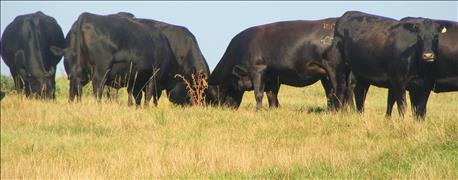
Tall fescue may still be the cool-season grass of choice for cattle grazing operations. But timely seed-head clipping of fescue pastures may help keep the endophyte fungus from multiplying.
Fescue is a heavy producer for spring and fall grazing. But summer palatability drops with the presence of the fungus which grows between the plant cells and overwinters in the plant’s base, points out Marvin Hall, Extension forage agronomist at Penn State University. Summer-time clipping can also help accumulate more growth and greater leaf retention for use in fall and winter.

NIP IT IN THE BUD: Endophyte-infested tall fescue needs to be managed to reduce toxins consumed by grazing cattle. Photo courtesy of BioZyme Nutrition
More than 90% of all U.S. fescue pastures are infected with the fungus that adversely impacts cattle performance, adds Lindsey Grimes, BioZyme Nutrition field support. That, despite the long availability of of recommended endophyte-free varieties.
Invisible threats to nip
The fungal organism doesn’t affect the growth or appearance of the grass, and requires a laboratory analysis to detect. But it produces alkaloids that are toxic to animals, contributing to poor conception rates, low birth weights and low daily gains of animals grazing fungus-infected tall fescue.
Fescue toxicosis is the most common complication of grazing infected fescue, according to Grimes. Cattle may exhibit rough hair coats, heat stress, suppressed appetite, poor growth or reduced calving rates. Every 10% increase in endophyte levels causes a 0.1 pound decrease in average daily gain.
There are multiple methods to manage the fescue endophyte. These may include:
* Use low- or no-endophyte (endophyte-free) seed when establishing new stands.
* Diluting the endophyte by interseeding legumes or other grasses this fall, knowing that the fescue will gradually “weed out” less competitive forage varieties over time.
* Switch to other forage species.
For more helpful tips on managing and stockpiling fescue and on replacement species, click on Penn State’s Managing tall fescue.
About the Author(s)
You May Also Like




